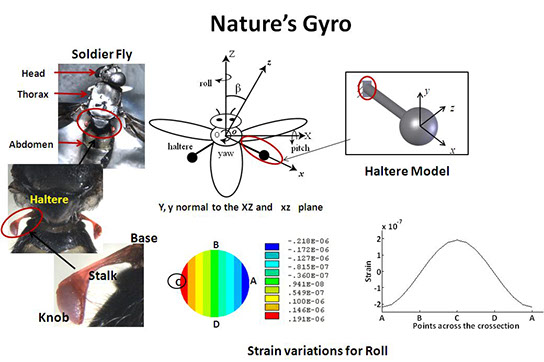
Prof. Rudra Pratap's Research Group


Our study of MEMS devices has brought our attention to some of the small-scale sensors and transducers that nature exploits. Nature’s design is particularly elegant and oftentimes awe-inspiring. We, in collaboration with colleagues from the department of biology, are studying the mechanics of insect hateres as gyroscopic sensors.
Since its inception, MEMS gyroscope design, as well as its sensing technique, has not changed much. We are evaluating the possibility of incorporating a new design of gyroscope inspired by a class of flying insects known as Diptera.
Dipterans are flies whose hind-wings have evolved to be tiny structures known as halteres. Halteres (club-shaped organs) are attached laterally at the metathorax by a horizontal hinge joint. They use their pair of halteres as sensing organs for their rotation in space while flying. A complete understanding of the haltere function will only be achieved with a theory that explains the sensing of all three components of the body rotation. We understand the importance of kinematics of halteres and the beat plane angle in the sensing of all three components of body rotation and are currently working to understand the haltere function. Once we achieve this understanding, our aim is to fabricate a gyroscope inspired by these Dipteran halteres.
MEMS Lab, Centre for Nano Science and Engineering, Indian Institute of Science. Bangalore-560012
Phone: +91 (80) 2293 3250, +91 (80) 2360 8659 Fax: +91 (80) 2360 1648 Email: pratap@iisc.ac.in, memslab@iisc.ac.in